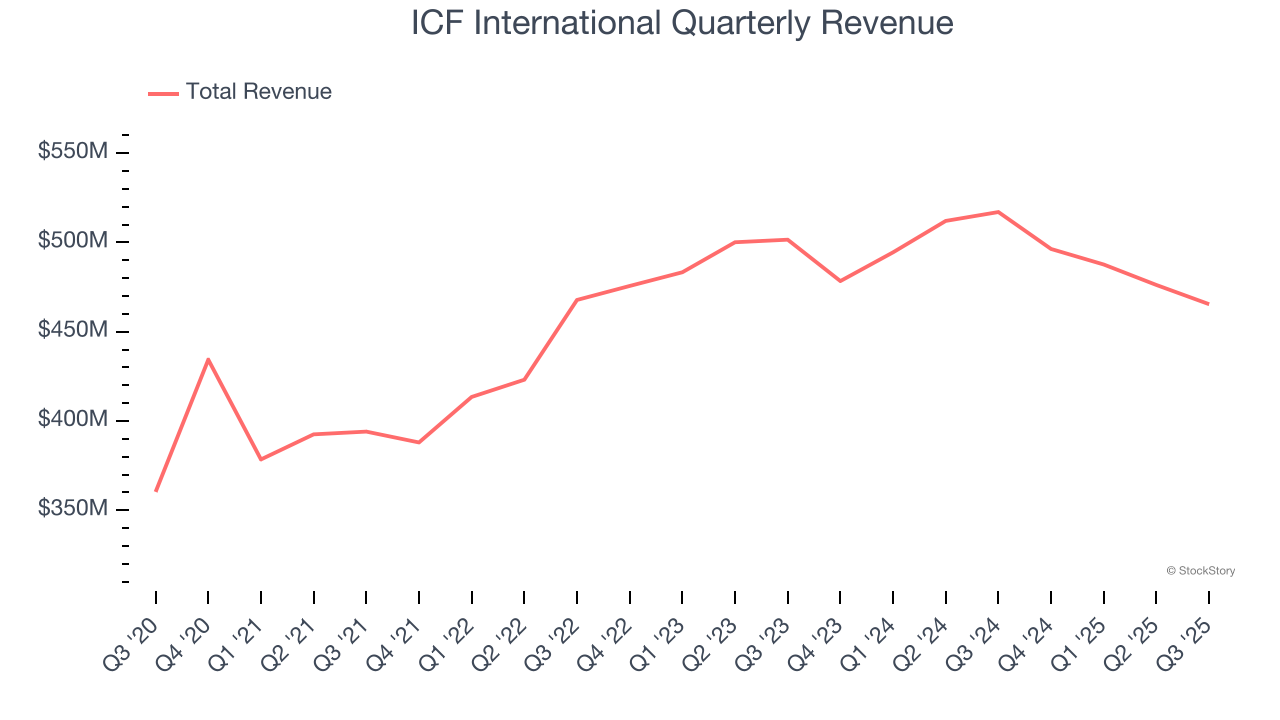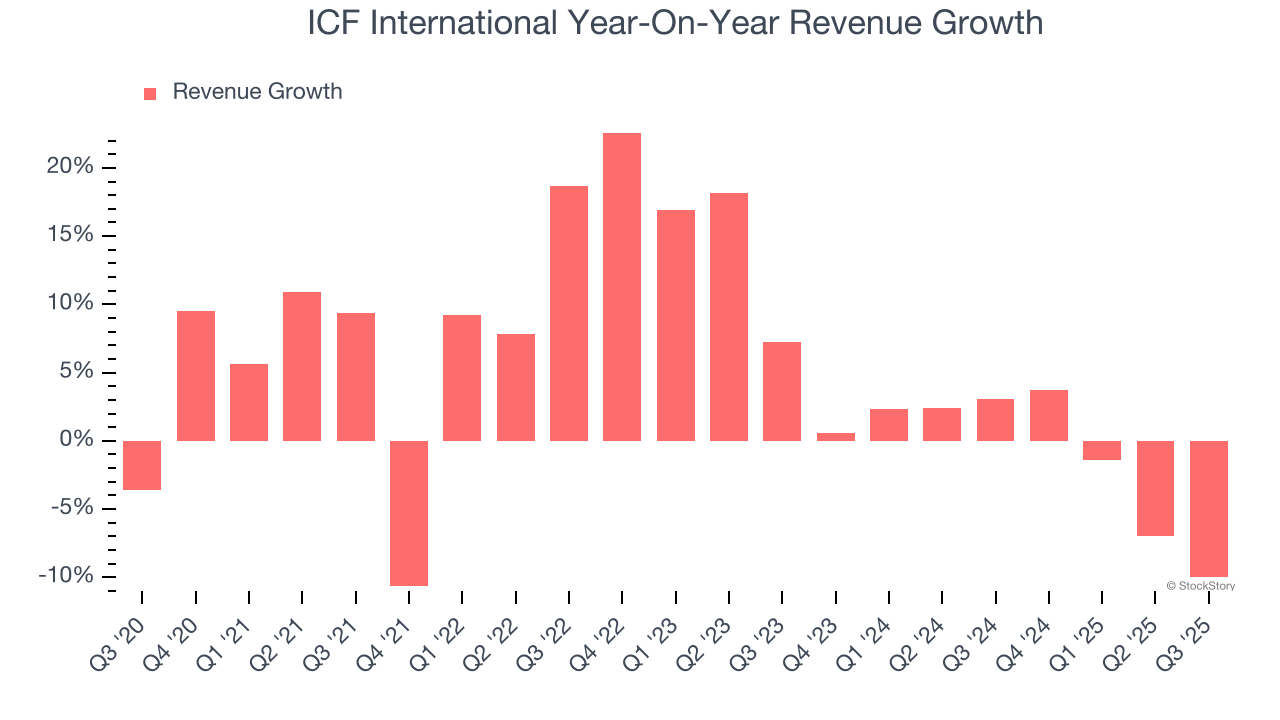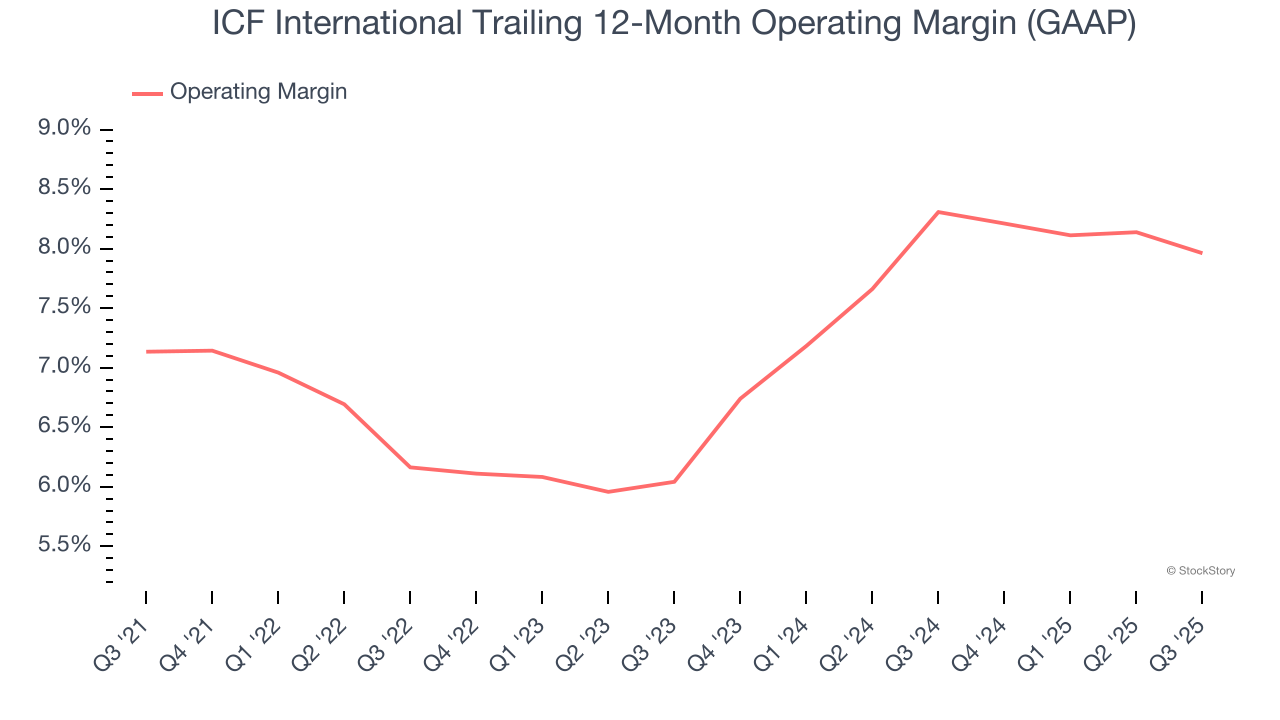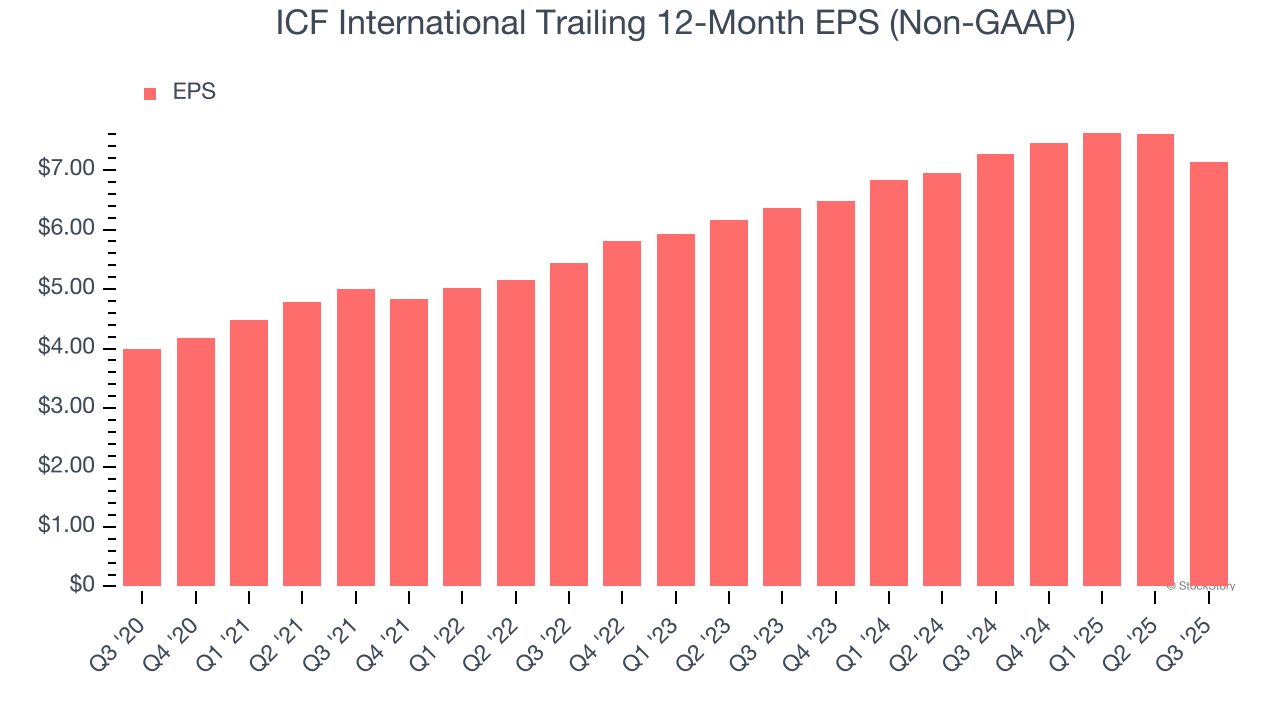
Professional consulting firm ICF International (NASDAQ: ICFI) missed Wall Street’s revenue expectations in Q3 CY2025, with sales falling 10% year on year to $465.4 million. Its non-GAAP profit of $1.67 per share was 3.7% below analysts’ consensus estimates.
Is now the time to buy ICF International? Find out by accessing our full research report, it’s free for active Edge members.
ICF International (ICFI) Q3 CY2025 Highlights:
- Revenue: $465.4 million vs analyst estimates of $484.2 million (10% year-on-year decline, 3.9% miss)
- Adjusted EPS: $1.67 vs analyst expectations of $1.73 (3.7% miss)
- Adjusted EBITDA: $53.16 million vs analyst estimates of $55.3 million (11.4% margin, 3.9% miss)
- Operating Margin: 8.3%, in line with the same quarter last year
- Free Cash Flow Margin: 9%, up from 3.9% in the same quarter last year
- Backlog: $3.5 billion at quarter end
- Market Capitalization: $1.58 billion
Commenting on the results, John Wasson, chair and chief executive officer, said, "Our third quarter performance demonstrates the benefits of ICF's diversified client base, our agility in adapting to challenging market conditions, and the success of our business development activities.
Company Overview
Operating at the intersection of policy, technology, and implementation for over five decades, ICF International (NASDAQ: ICFI) provides professional consulting services and technology solutions to government agencies and commercial clients across energy, health, environment, and security sectors.
Revenue Growth
Reviewing a company’s long-term sales performance reveals insights into its quality. Even a bad business can shine for one or two quarters, but a top-tier one grows for years.
With $1.93 billion in revenue over the past 12 months, ICF International is a mid-sized business services company, which sometimes brings disadvantages compared to larger competitors benefiting from better economies of scale. On the bright side, it can still flex high growth rates because it’s working from a smaller revenue base.
As you can see below, ICF International’s sales grew at a decent 5.6% compounded annual growth rate over the last five years. This shows its offerings generated slightly more demand than the average business services company, a useful starting point for our analysis.

We at StockStory place the most emphasis on long-term growth, but within business services, a half-decade historical view may miss recent innovations or disruptive industry trends. ICF International’s recent performance shows its demand has slowed as its revenue was flat over the last two years.

We can dig further into the company’s revenue dynamics by analyzing its backlog, or the value of its outstanding orders that have not yet been executed or delivered. ICF International’s backlog reached $3.5 billion in the latest quarter.
This quarter, ICF International missed Wall Street’s estimates and reported a rather uninspiring 10% year-on-year revenue decline, generating $465.4 million of revenue.
Looking ahead, sell-side analysts expect revenue to grow 1.3% over the next 12 months. While this projection implies its newer products and services will fuel better top-line performance, it is still below average for the sector.
Unless you’ve been living under a rock, it should be obvious by now that generative AI is going to have a huge impact on how large corporations do business. While Nvidia and AMD are trading close to all-time highs, we prefer a lesser-known (but still profitable) stock benefiting from the rise of AI. Click here to access our free report one of our favorites growth stories.
Operating Margin
Operating margin is a key measure of profitability. Think of it as net income - the bottom line - excluding the impact of taxes and interest on debt, which are less connected to business fundamentals.
ICF International’s operating margin might fluctuated slightly over the last 12 months but has remained more or less the same, averaging 7.2% over the last five years. This profitability was paltry for a business services business and caused by its suboptimal cost structure.
Analyzing the trend in its profitability, ICF International’s operating margin might fluctuated slightly but has generally stayed the same over the last five years. This raises questions about the company’s expense base because its revenue growth should have given it leverage on its fixed costs, resulting in better economies of scale and profitability.

In Q3, ICF International generated an operating margin profit margin of 8.3%, in line with the same quarter last year. This indicates the company’s overall cost structure has been relatively stable.
Earnings Per Share
Revenue trends explain a company’s historical growth, but the long-term change in earnings per share (EPS) points to the profitability of that growth – for example, a company could inflate its sales through excessive spending on advertising and promotions.
ICF International’s EPS grew at a remarkable 12.3% compounded annual growth rate over the last five years, higher than its 5.6% annualized revenue growth. However, this alone doesn’t tell us much about its business quality because its operating margin didn’t improve.

Like with revenue, we analyze EPS over a more recent period because it can provide insight into an emerging theme or development for the business.
For ICF International, its two-year annual EPS growth of 6% was lower than its five-year trend. We hope its growth can accelerate in the future.
In Q3, ICF International reported adjusted EPS of $1.67, down from $2.13 in the same quarter last year. This print missed analysts’ estimates, but we care more about long-term adjusted EPS growth than short-term movements. Over the next 12 months, Wall Street expects ICF International’s full-year EPS of $7.14 to stay about the same.
Key Takeaways from ICF International’s Q3 Results
We struggled to find many positives in these results. Its revenue missed and its EPS fell short of Wall Street’s estimates. Overall, this was a weaker quarter. The stock remained flat at $85.46 immediately after reporting.
Is ICF International an attractive investment opportunity at the current price? When making that decision, it’s important to consider its valuation, business qualities, as well as what has happened in the latest quarter. We cover that in our actionable full research report which you can read here, it’s free for active Edge members.








